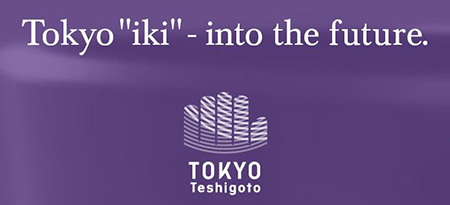Tokyo Butsudan
(Buddhist Altars)

- Comprehensive art of traditional crafts in Tokyo, Bringing togethervarious arts.
- In the 17th through 18th centuries, as Buddhism penetrated among the general public and Buddhist temples began appearing in Japan, the Butsudan (Household Buddhist Altars and Fittings) was created for use in household prayer sessions. Within a Butsudan are placed the principal image of Buddha, Ihai (Buddhist memorial tablet) inscribed with ancestors’ names, and other items. Tokyo Butsudan has a profound texture achieved through precise craftsmanship influenced by temple design and use of both imported woods, including rosewood, ebony, etc., and mulberry, and they feature simple but mystic beauty. Butsudan making involves various techniques handed down from traditional crafts of Tokyo, including engraving to make traditional representations of Chinese phoenixes and foliage scroll, coating to highlight the beauty of the woody texture through repeated Urushi applications, Sashimono (cabinetwork) to assemble wooden components without nails, and others. This bringing together of these high-level techniques is why the Tokyo Butsudan is called “the comprehensive art of traditional crafts of Tokyo.” With recent increase of Butsudan in a furniture style that is not linked to temple design, Tokyo Butsudan is making efforts in producing traditional altars so that people can show respect for their ancestors and thank them for their legacies. Tokyo Butsudan that craftsmen put their energies to will be passed on to future generations to enhance strong family ties.
| Main Areas of Manufacture | Taito Ward, Arakawa Ward, Adachi Ward |
|---|---|
| Designation/ Certification Date | December 24th, 1982 |
| Traditionally Used Raw Materials | Timber species used in the construction of Butsudan include Ebony, Rosewood, Bombay Blackwood, Chinese Quince, Zelkova, Mulberry, Cherry, Cypress, Cedar and other timbers with similar qualities. Additionally, a natural lacquer is used for lacquering. |
Traditional Technologies and Techniques
- The basic wooden construction of Tokyo Butsudan (Buddhist Altars) is assembled free of nails. Woodworking techniques such as mitered shoulder joints, dovetail keyed miter joints, and mortise and tenon joints are all used.
- Engraving involves standard woodworking techniques, as well as the working of reliefs and inlays, etc.
- Using lacquer that has undergone a refining process, the finish that is applied is polished to a gloss.
History and Characteristics
In modern times, when Butsudan (Buddhist Altars) are imagined by people, they tend to think of immobile box-type structures that are placed somewhere. However, when originally conceptualized, Butsudan were seen as a stand on which statues of Buddha could be safely placed within the precincts of Buddhist temples. As the meaning of "Butsudan" when written in kanji characters implies (literally "a platform on which a statue of Buddha maybe safely placed"), at one stage such altars were also created from earth and stone in addition to wood. Concerning the use of stone structures, it seems that their origins lay in cave altars constructed in India and China.
It is said Buddhism reached Japan in 538 (552 in some sources) during the Asuka Period. This was due to King Seong of the Kingdom of Baekje offering a Buddhist statue and sutra scrolls as a gift. The Emperor Tenmu stated in 685, “Iurge that within the country, each household be encouraged to build an altar with a dais where an image of Buddha and a sutra may be placed; and that each does hereby engage in acts of worship.” This rescript is said to have resulted in the construction of Buddhist monasteries and nunneries in each province of the country during the Nara Period that followed.
While until the Heian Period (794 - 1185) Buddhism remained a preserve of the aristocracy, during the Kamakura Period (1185-1333) it underwent a transformation as the aristocracy conveyed it to the warrior classes. Furthermore, through the work of missionaries such as Honen, Shinran and Nichiren, Buddhism spread further among the masses.
With the arrival of the Tokugawa Shogunate (1603 - 1868), because a system of government with the Shogunate at its apex was established, an attitude that promoted both the protection and strengthening of Buddhism was instituted. Such policies saw numerous temples being built in Edo as the power of Buddhism increased due to the organization of death registers.
Tokyo Butsudan started to be manufactured at the beginning of the Genroku Era (1688 - 1704). Using their own techniques and materials such as hardwood timbers including Mulberry and Zelkova, during their work breaks the cabinetmakers of Edo made rather simple cabinets without much decoration. Furthermore, it is also said that Shokei Yasuda, a third-generation Edo sculptor of Buddhist statues, was the first person to use imported timbers such as Ebony and Rosewood (in around 1840).
These days, the Tokyo Butsudan craft continues to incorporate the skills passed down by generations of craftsmen. The altars themselves also offer a marvelous sense of splendor that induces those who witness them to bow in reverence.
Contact Details
| Manufacturing Area Cooperative Name | Tokyo Karaki Butsudan Manufacturing Cooperative Association |
|---|---|
| Address | 1F Copo Sumire, 4-9-32 Ayase, Adachi Ward, Tokyo 120-0005 |
| TEL | 03-3620-1201 |
| Manufacturing Area Cooperative Name | Tokyo Karaki Butsudan Manufacturing Cooperative Association |
|---|---|
| Address | 7-14-3 Ginza, Chuo-ku, Tokyo 104-0061 |
| TEL | 03-3542-5771 |






